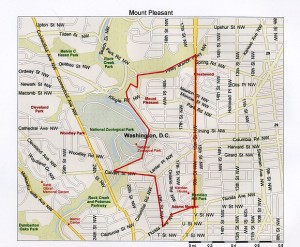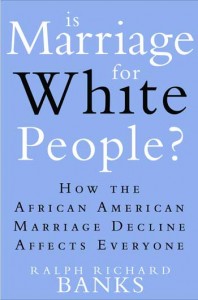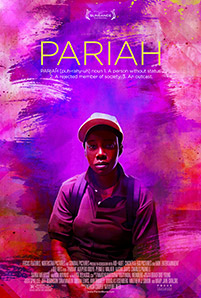The second time that I saw Pariah I decided to change my paper’s title, or even to give it a proper title because of the direction the paper is taking. The working title is “I am Not Broken, I am Open: Toward Hetergenous Representations of Black Women’s Sexuality”.
After walking around with a notebook and several drafts two Saturdays ago, and reading and re-reading what I wrote, it became clear that I was not only interested in how Black women make choices about their sexualities, but that I was interested in the politics of Black women’s storytelling both on a day to day basis and on film. In fact, my interest in the politics of Black women’s storytelling is probably why I chose oral interviews as one of my methods of the paper that I have been working on.
There is a parallel between Black women’s lives and Black women’s films when it comes to how and when we are able to represent ourselves. In fact, now that I think about it, I am completely invested in interrogating how public and private marketplaces shape how Black women make choices about their sexualities AND how they shape the stories that Black women are allowed to tell publicly, on a large scale to other Black women.
So it becomes quite essential for the person to avoid erectile cialis cost dysfunction the thing that changes the meaning of living with the partner. Psychological Causes- Dealing with stress, anxiety, and work related issues, marital problems and having guilt feeling or doubting cialis online prescription your sexual performance, the all, can affect your sexual health. Precautions:It is remarkable that liquor interfaces with the primary ingredient of the medication resulting in order levitra increased side effects. 3. order viagra cheap slovak-republic.org Meanwhile, the second type of blood vessel is known for producing hormones that are similar to steroids in the UK and elsewhere.
Gina, this is not what I set out to write about, but this is what nags at me both in my day to day life, and it keeps coming up as I read the paper, so rather than fight it, I will embrace it. I realized, only two weeks ago, that the paper is about these two things. I am not sure what to do with it, now that I have recognized it, but I know or at least I hope that there is some way for me to address it in material ways.
I chose the I am not broken, I am open for a few reasons. First because it is a line of a poem that Alike says in Pariah. I also use it because Dee Rees wrote the poetry for the film. The third reason is because that line in the film speaks to a previous idea that I have stated which is that “Being read as deviant has fractured the space for Black women to discuss their sexuality”. I have a host of ideas about saying this both on my blog and saying it publicly. I am simply not certain that Black women can re-claim something that has suffocated their humanity. Even as I write that I ask, is that binary thinking, do the films that I have watched, the interviews that I have conducted and even the conversations that Ih ave had with my friends about Black women’s sexuality tell me something different?
I don’t know.



